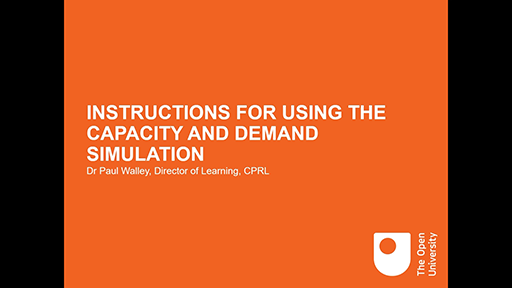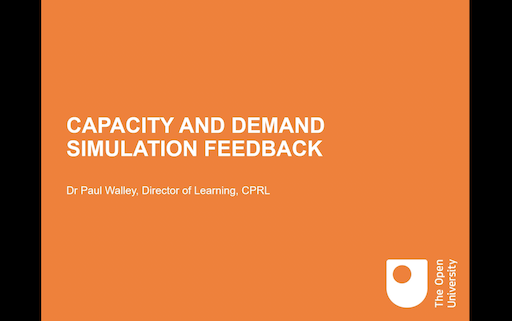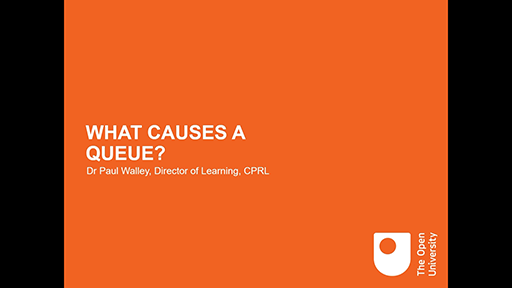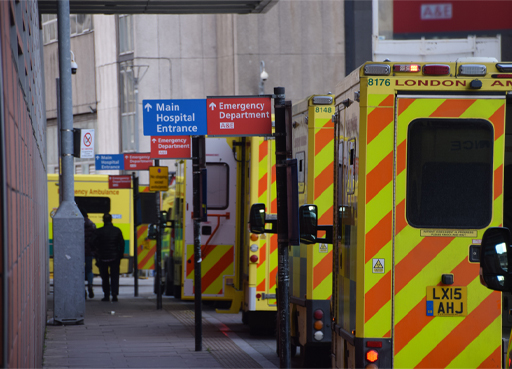11 Why do we have queues?
Just about everyone has experience of being in some sort of queue. If you phone your bank, telecoms provider or similar service you will almost certainly be phoning a call centre where you can often expect to wait before someone picks up the phone. Similarly if you visit a supermarket you can expect to wait before you pay. In a barbers shop you wait your turn. If you go to a theme park many of the rides can have queues that are an hour long on busy days.
So why is it that all of these different types of service make you wait? Are they all just incompetent at managing capacity? Is it they are greedy and won’t pay enough staff on duty to meet demand?
Download the following excel file and open it so you can see the content (open the file in a new tab or window by holding down Ctrl [or Cmd on a Mac] when you click on the link).
Basic capacity model [Tip: hold Ctrl and click a link to open it in a new tab. (Hide tip)]
Now watch the following screencast that shows you how to use the spreadsheet in the following exercise.

Transcript: Screencast 2: Instructions
Using the average demand of 40 (ranging between 20 and 60) as has been set in the spreadsheet, compete the following tasks:
Task 1 Set your capacity much below average capacity. What happens to the size of the queue? Make a note of this. Repeat this a few times to see if the answer is always the same.
Task 2 Set your capacity at the average demand. Has the queue behaviour changed? Again make a note. Again, repeat this a few times to see if the answer is always the same.
Task 3 Now incrementally increase capacity until you think you have enough. How much capacity makes your queue disappear to almost zero?
Does the existence of a queue provide a clear indication there is not enough capacity to meet demand?
Once you have completed all the tasks watch the following screencast that provides feedback about the findings that you should have got from the exercise. Check that you did get the same kinds of results.

Transcript: Screencast 3: Feedback
The exercise shows that queues can form even when capacity is greater than demand. The following screencast explains the theory underpinning this idea.

Transcript: Screencast 4: What causes a queue?
Waits and delays example: Ambulance service responsiveness
Ambulance services are a good example of where demand must be understood so that planning can take place to ensure enough ambulances are available to meet all emergency demand. In the UK ambulance services are tasked with responding to life-threatening, urgent demand (“Category 1”) with an average response time of seven minutes and 90% within 15 minutes or less. The services have to plan the right number of ambulances and crew each day, anticipating any seasonal fluctuations in demand and taking into account random variation in demand that makes some days unexpectedly busy. As we can see from the previous section, there would need to be some spare capacity in the system if queues are not to develop.
When calls come in they are triaged so that urgent cases are put ahead of those less serious. When ambulances attend calls they will try to deal with the patient without a time-consuming journey to hospital either by treating and discharging those less seriously hurt in situ or by seeking alternative forms of transport to hospital for “walking wounded”. Some services even organise taxis for patients where an ambulance is not strictly necessary.
At busy times for emergency care one of the biggest problems is that ambulances often have to queue to drop patients off at A&E. This means the ambulances become unavailable for new patients and response times increase.
We can see from queue theory that a small reduction in demand might make a big difference to waits and delays. The next section looks at an approach that tries to reduce demand entering a service by eliminating unnecessary demand.

